Mercedes-Benz celebrates 40 years since the W201 was born – the model that later became the C-Class.
When most people think about buying their first Mercedes-Benz motor vehicle today, the model they usually settle on is the C-Class. Once known as the ‘Baby Benz’, the C-Class began its life as the Mercedes-Benz 190 or known internally at Daimler as the W201.
In Malaysia, the most common variant of the W201 was the fuel injected 190 E, but in other parts of the world there were carbureted 190 models without the ‘E’ in the name as well as diesel equipped 190 D variants. The first of these was shown exactly forty years to the day on the 8th of December 1982!
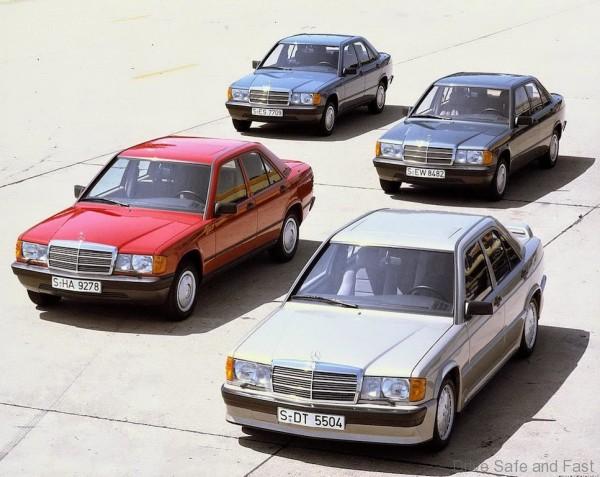
The Mercedes-Benz 190 was a huge critical and commercial success by most accounts. Even famed Mercedes-Benz designer, Bruno Sacco, went on record saying that the 190 was his best work with the company.

Besides pioneering the compact segment for the traditionally large and luxurious Benz brand, the W201 was also a huge success at the Deutsche Tourenwagen Masters (DTM) in its 190 E 2.3-16 form.
This 185 hp engine was later evolved into the 2.5-16, which had an output of 195hp. Later on Evolution and Evolution II models were introduced for motorsport. These models are amongst the most sought after by collectors.
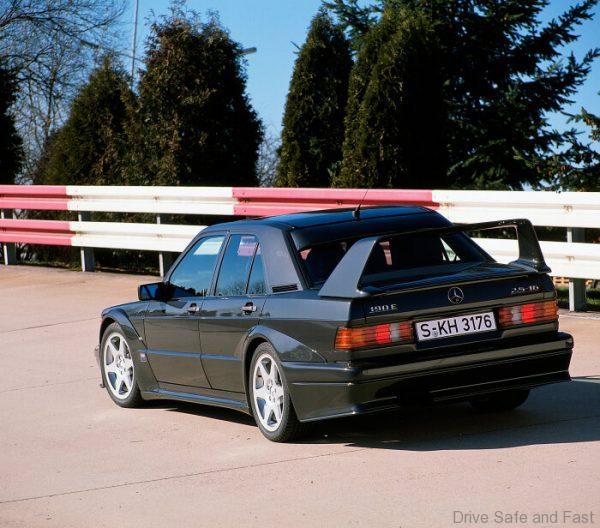
As mentioned, the 2.0L fuel injected 190 E is the most common version found in Malaysia. This version had an output of more than 120 hp, which is usable even today. This M102 engine featured KE-Jetronic multi point injection.
The more uncommon powertrains, at least in the Malaysian market include the carbureted 2.0L 190 with just 90 hp. The 190 D came with a 72 hp engine which features “sound-absorbing engine encapsulation” which gave it the “whisper diesel” marketing term.
Other uncommon variants in Malaysia are the 1.8L and 2.3L petrol injection models as well as the 2.5L diesel model – all sold as ‘Avantgarde’ versions in the last year of production, 1992.
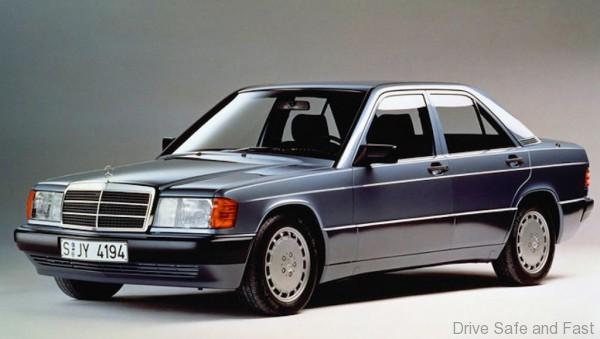
One year later, Mercedes-Benz unveiled its successor, the W202 C-Class. This was the first time the C-Class name was introduced.
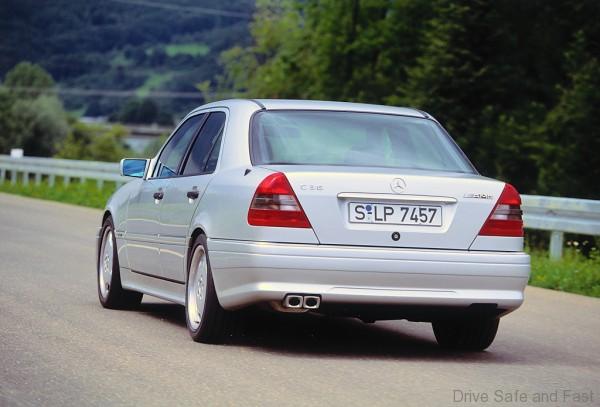
It was not easy for Mercedes-Benz to introduce a smaller sedan car, but it became necessary as the oil crisis of the 1970s showed the limitations of larger displacement engines and heavier vehicles. What’s more, the Clean Air Act had just been introduced, meaning cars would have to be a lot more fuel efficient in the USA starting 1985.
As such, Mercedes-Benz had to design a smaller, lighter sedan than their W123 E-Class that did not “compromise too much in terms of driving culture, safety and corresponding Mercedes-Benz characteristics”, as explained by one board member. Development began on 19 October 1978.
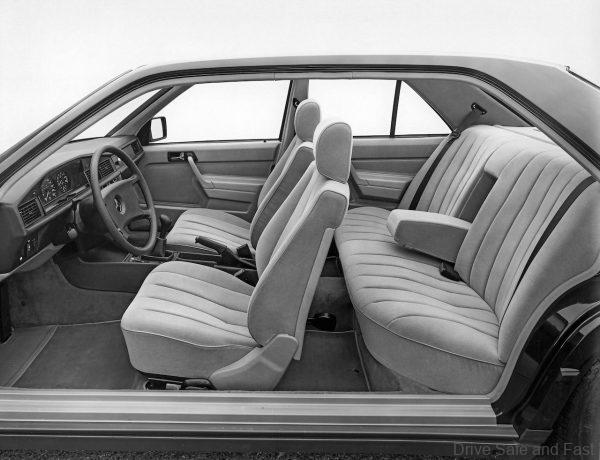
Key incorporating Mercedes-Benz characteristics to the baby Benz was its co-development alongside the new W124 E-Class. This meant that both models debuted as the most aerodynamically efficient sedans in their class.
The W201 had a coefficient of drag as low as 0.34cD. What’s more, the 190 shared its groundbreaking rear axle design with the E-Class. Track, camber, track width change, start-up and brake anti-dive support could all be independently determined thanks to a five-link design. By constructing the roof structure with roof rails facing outward and a fork carrier structure made of high-strength sheet metal, weight could be saved without compromising on crashworthiness.
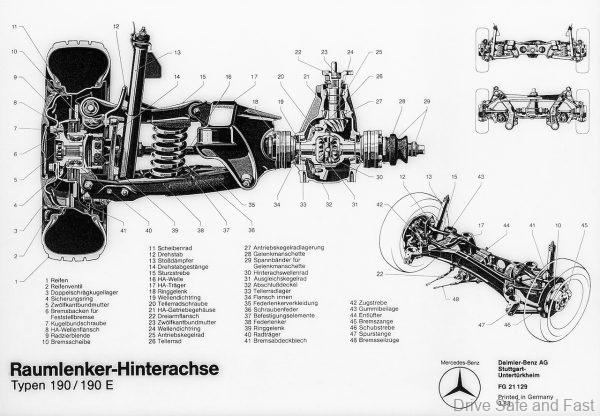
Another interesting point to note was that the W201 was the first Benz to be produced in Bremen – which is still the lead plant for W206 C-Class production to this day – was formerly the production site for the twice defunct Borgward brand.
Daimler made a record investment of 1.4 billion Deutsch Marks to create the most modern vehicle production facility in the world at the time. The W201 became the first car to have its axles installed via an automated process. At the end of its production run, the Bremen plant had produced over 1 million 190s.
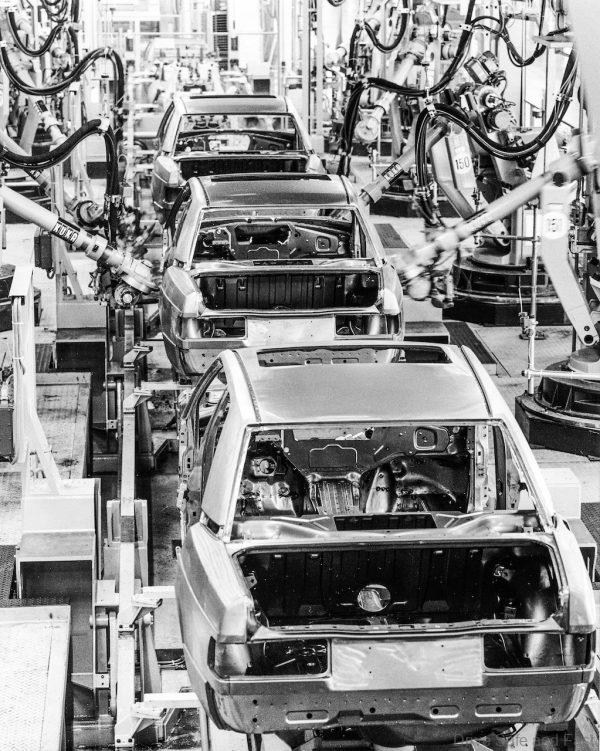
A few years ago, I was infatuated by the 190E and thought of buying one myself. Today, prices are higher than ever. Don’t get into one without understanding the significant maintenance costs involved though! Yes, the Mercedes-Benz W201 is a hardy vehicle with many examples surviving 40 years later without major problems.
That being said, wear and tear on suspension components must be resolved and this can be a five-figure repair job if it has never been done before. A 40 year old automatic gearbox and engine may also be in need of an overhaul to stay healthy, powerful and fuel-efficient, so set aside a few thousand Ringgit for those repairs as well.
Make sure to get one that doesn’t require much work on the interior and paint, as these will also set you back heavily. As with all classics, it’s best to pay extra for a single-owner, family heirloom that has been taken care of with a service record than to gamble on something cheap with an unknown history.

